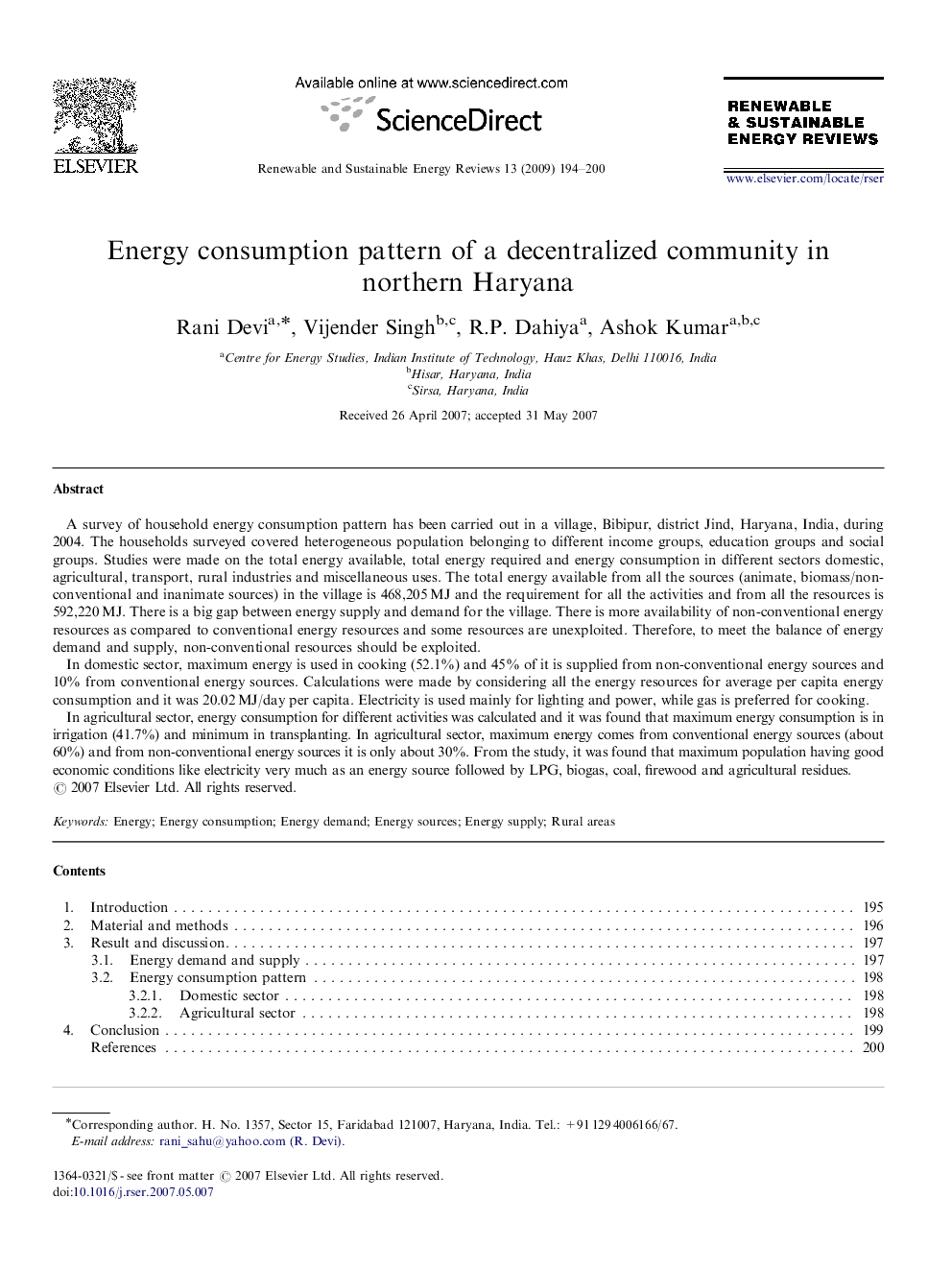| کد مقاله | کد نشریه | سال انتشار | مقاله انگلیسی | نسخه تمام متن |
|---|---|---|---|---|
| 1751506 | 1018417 | 2009 | 7 صفحه PDF | دانلود رایگان |

A survey of household energy consumption pattern has been carried out in a village, Bibipur, district Jind, Haryana, India, during 2004. The households surveyed covered heterogeneous population belonging to different income groups, education groups and social groups. Studies were made on the total energy available, total energy required and energy consumption in different sectors domestic, agricultural, transport, rural industries and miscellaneous uses. The total energy available from all the sources (animate, biomass/non-conventional and inanimate sources) in the village is 468,205 MJ and the requirement for all the activities and from all the resources is 592,220 MJ. There is a big gap between energy supply and demand for the village. There is more availability of non-conventional energy resources as compared to conventional energy resources and some resources are unexploited. Therefore, to meet the balance of energy demand and supply, non-conventional resources should be exploited.In domestic sector, maximum energy is used in cooking (52.1%) and 45% of it is supplied from non-conventional energy sources and 10% from conventional energy sources. Calculations were made by considering all the energy resources for average per capita energy consumption and it was 20.02 MJ/day per capita. Electricity is used mainly for lighting and power, while gas is preferred for cooking.In agricultural sector, energy consumption for different activities was calculated and it was found that maximum energy consumption is in irrigation (41.7%) and minimum in transplanting. In agricultural sector, maximum energy comes from conventional energy sources (about 60%) and from non-conventional energy sources it is only about 30%. From the study, it was found that maximum population having good economic conditions like electricity very much as an energy source followed by LPG, biogas, coal, firewood and agricultural residues.
Journal: Renewable and Sustainable Energy Reviews - Volume 13, Issue 1, January 2009, Pages 194–200